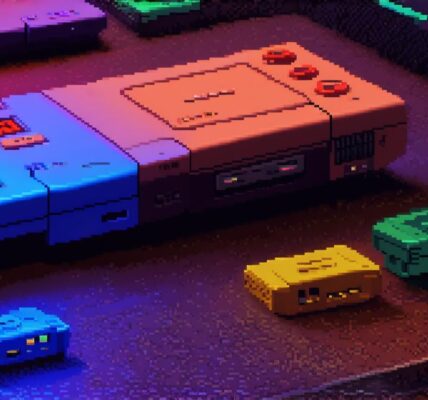Introduction
The video game industry has seen significant growth over the years, with millions of people worldwide playing games on various platforms. As a game developer, you have the opportunity to create engaging and immersive gaming experiences that captivate your audience. However, creating a successful video game can be challenging, as it requires a combination of creativity, technical skills, and business acumen.
1. Brainstorming Ideas
The first step in creating a successful video game is coming up with an idea that resonates with your target audience. To do this, you need to understand the preferences of your target market. You can conduct surveys or focus groups to gather information on what gamers want in a game. Alternatively, you can analyze existing games in the market and identify gaps that you can fill.
One example of a successful video game that was born out of an idea gap is Minecraft. The game’s creators, Markus Persson and Jens Bergensten, noticed that there were no other games that allowed players to create their own worlds from scratch. They filled this gap by creating Minecraft, which has since become one of the most popular games in the world.
2. Develop a Concept Document
Once you have an idea for your game, the next step is to develop a concept document. This document should outline the game’s mechanics, storyline, characters, and other key elements. It will serve as a blueprint for the rest of the development process and will help you keep track of progress.
3. Create Prototypes
Prototypes are early versions of your game that you can use to test and refine the mechanics and other elements. Creating prototypes is an iterative process, and you may need to go through several rounds of testing and tweaking before you have a final product.
4. Choose Your Platform
The next step in creating a video game is choosing the platform on which to release it. This could be a console, mobile device, or PC. Each platform has its own unique features and limitations that you need to consider when developing your game.
5. Develop the Game Engine
The game engine is the software that powers your game, providing the tools and resources you need to create the game’s graphics, sound, and other elements. There are many game engines available, each with its own strengths and weaknesses. Some popular game engines include Unity, Unreal Engine, and CryEngine.
6. Create Assets
Assets are the visual and audio elements that make up your game, such as characters, backgrounds, and sound effects. You can create these assets yourself or outsource the work to a freelancer or studio. It’s important to ensure that your assets are high-quality and optimized for the platform on which you will be releasing the game.
7. Test and Refine
Once you have created your game, it’s important to test it thoroughly to ensure that it is bug-free and runs smoothly. You should also gather feedback from beta testers and other stakeholders to identify areas for improvement. Refining your game based on this feedback is critical to its success.
8. Market and Distribute Your Game

The final step in creating a successful video game is marketing and distribution. This involves promoting your game through various channels, such as social media, influencer partnerships, and advertising. You will also need to decide how you will distribute your game, whether it be through digital stores or physical retailers.
Summary
Creating a successful video game requires creativity, technical skills, and business acumen. By following the steps outlined in this article, you can develop a compelling concept, create engaging gameplay mechanics, and market your game effectively to reach your target audience.




